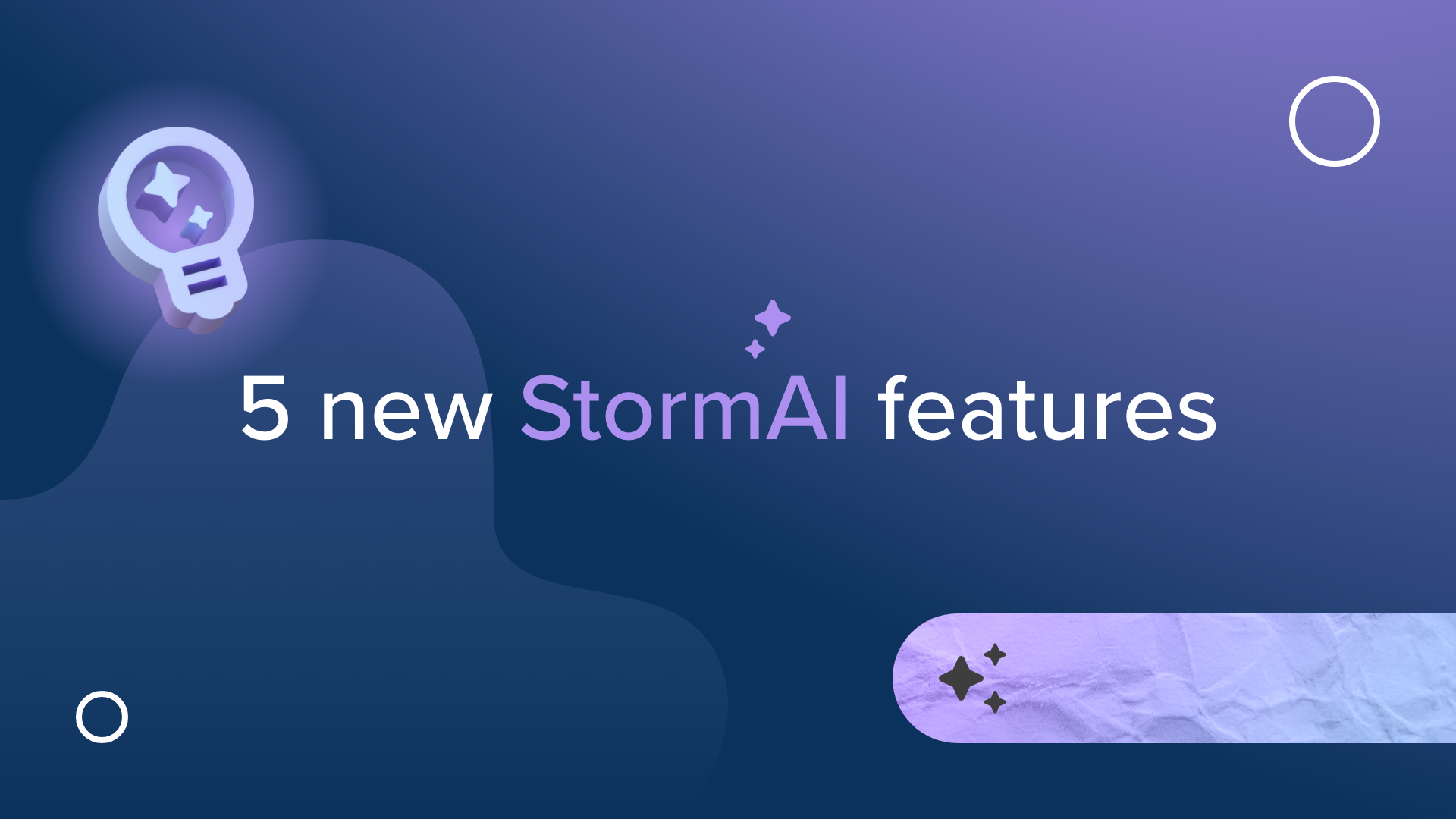A Beginner’s Guide to Agile Project Management Software
Introduction
Maybe you’re a team lead, a project manager, C-suite executive, or a new entry-level hire and you’re noticing inefficiencies in your individual or company workflows.
You know that better solutions must exist that can make your job and the job of those around you easier. In turn, your customers or clients could also benefit and see better results and experiences.
But how do you determine what changes you can — or should — make? How do you figure out where to start?
Well, for starters, you could take a look at your processes and technologies already in place. As digital transformation continues to advance everyday business practices, you may have seen or heard about the infusion of new technologies in the workplace.
From AI to cloud-based storage, how businesses operate is getting faster, smarter, and ultimately better. This might be the obvious place to start — but if you want to make an impact on your entire team (or organization), you can take it one step further.
Agile project management might have been a buzzword you’ve come across. Perhaps you’ve seen your industry’s thought leaders or top organizations singing its praises. But what really is it?
The easiest way to define Agile project management is by breaking down the parts. Agile is best considered a methodology or framework intended to infuse your work processes with speed, fluidity, and the ability to quickly adjust, change direction, or otherwise adapt.
The second part of that is project management. This is a bit more broad as project management means different things to different people, often depending on their industry. But in short, it is the use of specific knowledge, skills, tools and techniques to deliver something of value to people.
The goal of Agile Project Management then, is to infuse your project management process with speed, fluidity, and the ability to adjust and adapt. The method strives to take away any unnecessary steps that take place during the work process of a team and keep only the essential parts to get a project done as quickly and efficiently as possible.
The Basics of Agile Project Management
Agile management stems from a 2001 ‘manifesto” for Agile Software Development. Early agile was founded on four core values:
Individuals and interactions over processes and tools.
Working software over comprehensive documentation.
Customer collaboration over contract negotiation.
Responding to change over following a plan .
Effective agile project management is focused on the leveraging of software; however, it is only effective when the methodology and philosophy is prioritized by teams and leaders. Software itself isn’t going to usher in a new era of business operations on its own.
Key to this is the aforementioned digital transformation, and why it is so important to have an organizational strategy for it.
When it comes to effective Agile project management, there are 12 core principles attributed to the methodology that must be followed to maximize effectiveness:
The number one priority is customer satisfaction through the early and continuous delivery of valuable software.
Welcome changing developments, even late in development. Agile processes harness change for the customer’s competitive advantage.
Deliver working software frequently, from a couple of weeks to a couple of months, with a preference to the shorter timescale.
Businesspeople and developers must work together daily throughout the project.
Build projects around motivated individuals. Give them the environment and support they need, and trust them to get the job done.
The most efficient and effective method of conveying information to and within a development team is face-to-face conversation.
Working software is the primary measure of progress.
Agile processes promote sustainable development. The sponsors, developers, and users should be able to maintain a constant pace indefinitely.
Continuous attention to technical excellence and good design enhances agility.
Simplicity — the art of maximizing the amount of work not done — is essential.
The best architectures, requirements, and designs emerge from self-organizing teams.
At regular intervals, the team reflects on how to become more effective, then tunes and adjusts its behavior accordingly.
The TL;DR of it is this: successful agile teams are adaptable, collaborative (internally and externally), and most importantly — fast.
How Agile Project Management Software Works
So how does it all fit together, and what exactly is Agile project management software?
As we’ve established, agile project management is more of a mindset than a set of functions or frameworks. Key to that mindset is buy-in across the team or organization hoping to leverage it.
That being said, there are actually platforms and programs out there that take those four core values and 12 principles of Agile and apply them in a way that turns “traditional” project management on its head.
You may be knew to the concept of agile project management, but chances are you’ve already seen it in action somewhere. In fact, there are hundreds — if not thousands — of platforms and interfaces that are designed specifically with agile project management in mind (Stormboard being one of them!
Looking back at those 12 principles mentioned above, we can easily see that agile is all about building on collaboration, maintaining the ability to adapt, and creating new levels of efficiency. At the end of the day, this is precisely what Stormboard (and the various other platforms out there) are tying to accomplish.
Agile project management software centers around breaking up projects and tasks into a more manageable, piece-by-piece approach.
Through this, there can be better accountability, transparency, and productivity amongst teams from start to finish on a project.
Reasons to Adopt Agile Project Management Software
Businesses all around the world are shifting to the many different frameworks and processes built around agile. There are countless books, publications, blogs, and websites dedicated to the advantages of elevating your team’s processes through this methodology.
However, if you’re still not convinced that an agile approach is right for your team, that’s okay too! Change in business isn’t always easy — if it was, every business would be able to adapt and overcome even the most monumental challenges and roadblocks.
While agile project management software isn’t the right solution for every type of business or project, a lot of the time it does produce both short and long-term benefits.
Some of the most commonly cited benefits are:
Improved product/service quality.
Increased project control.
Enhanced collaboration opportunities.
Better organization and workload transparency.
By adopting a collaborative approach focused on timely delivery, agile teams simply perform better.
Agile is part of a positive chain of results. In a study published in the Journal of Operations Management, agile methodologies contributed to operational performance which in turn contributed to marketing and financial performance of the organization. In additional research 54% of people reported agile approaches (specifically scrum) resulted in improved satisfaction with deliverables.
Determining if Agile project management is right for your team isn’t as simple as just deciding one day to do it differently. However, there are countless resources out there to get your started — including some Agile experts right here at Stormboard that would be happy to talk to you and your team about taking the next step.
The Right Agile Project Management Software
The gist of it is simple: If you’re looking to improve your team productivity, adopting an agile approach is a good starting point.
Finding the right agile project management software is the next step. As mentioned above, there are a ton of options out there, and for those just dipping their toes into the Agile pool for the first time, the amount of available information and resources can feel like drinking from a fire hose.
With that in mind, it’s important to start small. Identify current roadblocks and hiccups within your business/project workflows, and determine the root cause.
Once you’ve taken those steps, getting your team set up for success by finding the right solution for your use case is critical. Stormboard is a dynamic, agile project management software that is opening up new opportunities and efficiencies for companies every day. In fact, there are more than 1 Million Stormboard users in over 180 countries around the world — that’s why we’re confident we can help your organization too.
Stormboard will help you and your team unite your processes and focus in on what really matters — getting work done quickly and efficiently. Our platform helps by creating seamless collaboration (regardless of physical location), eliminating time-consuming transcription, and providing purpose-built templates for virtually any agile process you can think of.
Whether you are just getting started or are looking to elevate your team’s performance, Stormboard is the right Agile Project Management tool for you.
Book a no-obligation Stormboard demonstration call with one of our agile experts today and learn exactly what we can do for your team.













